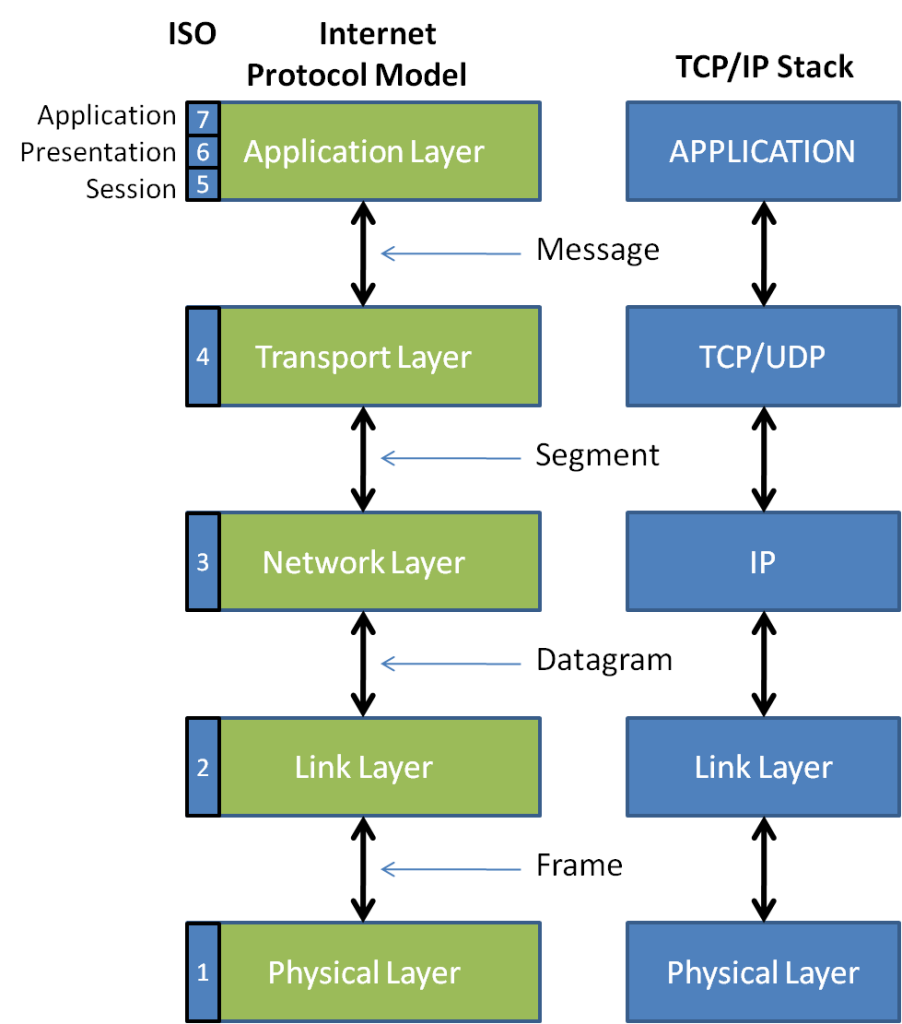Interconnected
Building inter and intra networks.
Networking experience has become absolutely critical in all facets of IT. Understanding not only how data gets from point to A to point B, but understanding every hop along the way helps to design high speed, low latency networks.
My experience is typically with Cisco, Juniper, Extreme Networks and various HPE, Dell and F5 appliances / blade interconnects. At the Firewall level, Palo Alto Networks, Cisco, Fortinet and Sonicwall.


Networking is more than just internet access; although that’s a part of it, there is a lot of other connectivity that needs to happen depending on the scope of the network. Typically I’ve followed the OSI model in regards to Layers 1 – 7, specializing in Layers 1 – 4.
I’ll describe my experience below, but knowing each of these and how they function allows for better connectivity, lower latency, higher throughput and enhanced security.
Network Experience Overview
I’ve worked from logical design to physical execution of networking projects, including selling these network solutions to C-level and upper management. Typically, I’ve both designed and headed up implementation projects and once completed, handed off to engineering and operational support teams.
OSI Layer Specific Experience
- Network Transports, including copper and optical cable (fiber)
- Single-mode / Multi-mode Fiber (OS1, OS2, OM3-5)
- Network Connectors – LC, SC, MTP / MPO, RJ45 / CAT 6, 6A, 7, 8, etc…
- Direct Attach Copper / Direct Attach Fiber (Active Optical Cable)
- Proprietary Cable Types
- SFP, SFP+, SFP28+, QSFP+, QSFP56+, QSFP-DD
- Patch Panels / Breakouts
- Switches, Routers, Firewalls and Appliances of all shapes and sizes
- DWDM / MUX / DEMUX / Wavelength Multiplexing
- Packet Capture / Network Tap
- Address Resolution Protocol (ARP)
- Cisco Discovery Protocol (CDP)
- CHAP / MSCHAP
- Link Layer Discovery Protocol (LLDP)
- Direct Attach Copper / Direct Attach Fiber (Active Optical Cable)
- Multi-Protocol Label Switching (MPLS)
- Virtual Private LAN Service (VPLS)
- Spanning Tree Protocol (STP)
- Layer 2 / Unrouted VLANs
- MAC Addressing
- Link Aggregation Control Protocol (LACP)
- VLANs
- VLAN Trunking Protocol (VTP)
- 802.11 (Wireless)
- IP Addressing / Subnetting
- Border Gateway Protocol (BGP / iBGP / eBGP)
- Hot Standby Routing Protocol (HRSP)
- Virtual Redundant Routing Protocol (VRRP)
- Open Shortest Path First (OSPF)
- IPSec
- Familiar with routing protocols (RIP, EIGRP, IS-IS)
- RFCs
Protocols / Other Specific Experience
- HTTP / HTTPS
- DNS / DNS over HTTPS / DNS over TLS / DNSSEC
- DHCP / DHCP Options / DHCP Helpers
- SSH
- FTP / SFTP / FTP over SSH
- ICMP
- Equal Cost Multipath Routing
- Bidrectional Forwarding Detection (BFD)
- BGP / BGP Community / Public and Private ASN
- SSL and TLS
- NTP
- IPSec / L2TP / VPN
- ISAKMP / IKE
- Routed Loopbacks
- RADIUS / TACACS
- Spanning Tree Protocol (STP)
- VPC (Nexus) / VSS (Catalyst 6000) / Stackwise Virtual (Catalyst 9000)
- MLAG (Arista)
- MCLAG (Aruba)
- VSF / VSX (Aruba)
- Spanning Tree Protocol (STP)
- Layer 2 / Unrouted VLANs
- iSCSI (Segregated and Routed)
- SNMP
- TCP/IP
- UDP (and when and when not to use it)
- Syslog Forwarding
- BOOTP
- PXE
- LDAP (while not a networking protocol, it’s useful to know this for configuration)
- GRE
- Policy Based Routing (PBR)
- Access Lists (ACL)
- NAT / PAT
- WAN (Point to Multipoint)/ MAN (Point to Point Circuits)
- SPAN / Port Mirroring
- Fiber Channel / FCoE (not inherently always network’s responsibility but still part of networking)
- NVMeoF / NVMeoE / NVMeoFC – Emerging technologies
- Load Balancing (Layers 4 -7)
- WCCP – Web Cache Communication Protocol
- ITD – Intelligent Traffic Director (Cisco Nexus)
- SVIs (Switch Virtual Interface; VLAN Interface)
- BPDU Filter / BDPU Guard
Platform Specific Experience
- Cisco Nexus 2000, 3000, 5000, 7000, 9000
- Cisco Catalyst 3000, 6000, 8000, 9000
- Cisco Routers running IOS-XE (ASR-1000, ISR-4300, Catalyst 8000)
- Cisco Meraki
- Cisco MDS
- Cisco Firepower / ASA
- Cisco Umbrella (Limited Experience)
- Cisco Modeling Labs (CML) / VIRL
- Server / Blade Interconnects / Uplinks (HPE, Dell, Cisco, Brocade)
- Arista EOS
- Aruba / CX
- Adtran NetVanta
- Nvidia Infiniband / Mellanox
- HPE StoreFabric
- BlueCoat (WCCP, ITD)
- Zscaler
- BIND
- Palo Alto Firewalls
- Fortinet Firewalls (limited experience)
- Sonicwall
- F5 BIG-IP (Including APM)
- Infoblox (Grid Master and Grid Member Topologies)
- NetMRI
- Extrahop
- Keysight Packet Brokers / Taps (formerly Ixia)
- Gigamon
- Extreme Networks
- Force 10 (Dell)
- SilverPeak (SD-WAN)
- Kemp Load Balancers
- BlueCat DNS
Logical Diagram
Normally I like to start out with a logical diagram that represents what we are trying to accomplish; this typically be a requirements driven basic diagram.

Physical Diagram
From the logical diagram, I will usually then draw a physical diagram. This helps build a component list of what we will actually need to make it happen from a physical perspective. This usually isn’t an absolutely port specific diagram (though it can be), but its more for components and a general idea of how the topology is laid out.
